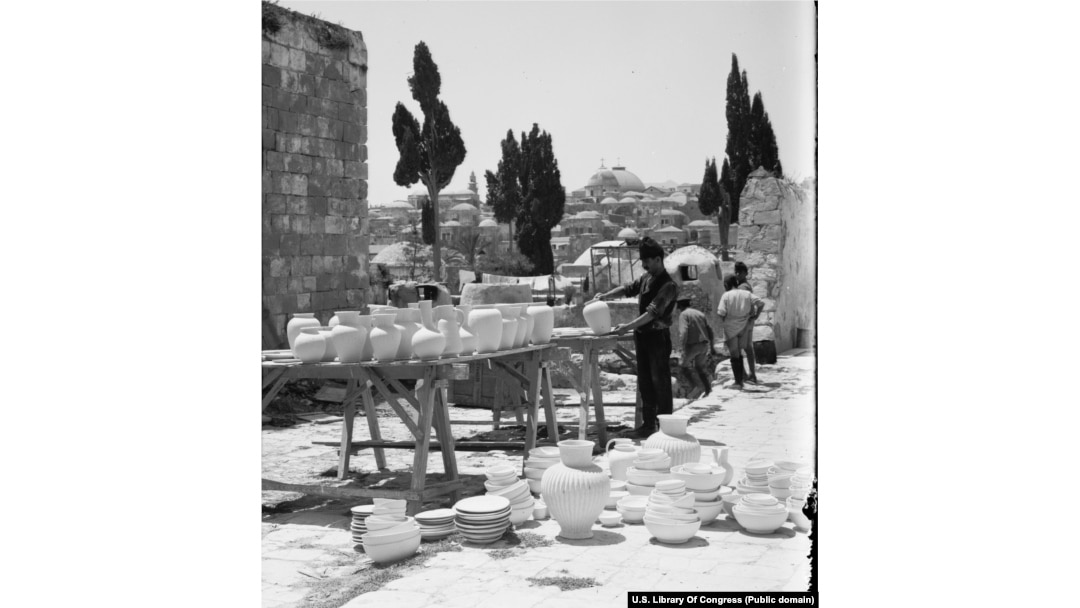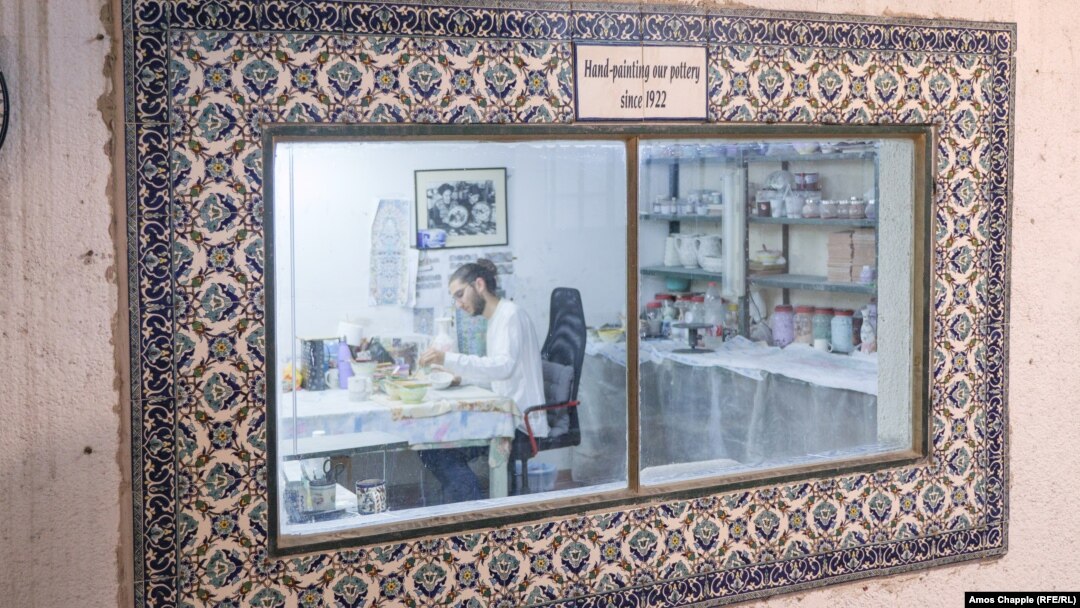After a century of artistic evolution in the Middle East, the celebrated ceramic art of Jerusalem Armenians may soon be produced in Armenia for the first time.
JERUSALEM -- It is the world’s oldest Islamic shrine, built on Judaism’s holiest site. But in 1919, when tiles on the Dome of the Rock began to peel off, it was Christian Armenians who were sent in to make the repairs.

The Dome of the Rock, in Jerusalem’s old city. In the early 1900s, tiles from the shrine were "constantly falling off the walls and could be frequently found for sale in the city," according to the British authorities of that time.
The British rulers of Palestine at the time sought ethnic Armenian craftsmen from Kutahya, in today's western Turkey, who had ended up in the Middle East after surviving the mass killings and deportations often referred to as the Armenian genocide.
The Armenians were highly regarded for their expertise in ceramic art, but as funding for the restoration of the Dome of the Rock dried up and complaints mounted over Christians working on an Islamic shrine, the Armenians’ work on the restoration was stopped within a couple of years.

Artisans from the Dome of the Rock Tiles workshop drying pottery in Jerusalem in the early 1920s. The company was one of two firms set up by ethnic Armenians brought to Palestine by the British.
In 1922, the Armenian artisans branched out on their own to set up two separate workshops in Jerusalem specializing in tiles and decorated pottery. The settlers drew from Persian and Islamic techniques but gradually developed their own artistic style, free of the restrictions they had faced under Ottoman rule. Inspiration came largely from the animals and landscapes of their adopted homeland.
A woman painting a vase at the Dome of the Rock Tiles workshop in the early 1920s. The company was run by ethnic Armenian ceramicist David Ohannessian.
Today several pottery workshops operate inside Jerusalem’s Armenian quarter and the distinct artwork is gifted to visiting royals and presidents and exported around the world.
A tile mural by Marie Balian in Jerusalem's Armenian quarter.
In 1992, the Smithsonian Museum in Washington D.C. held a monthslong exhibition of Armenian Ceramics From Jerusalem painted mostly by Marie Balian, one of the masters of the new art form. Several other museums, including Britain’s Victoria and Albert Museum also hold examples of Jerusalem Armenian pottery.
Setrag Balian
“This kind of art has become a symbol of Jerusalem,” Setrag Balian told RFE/RL inside the family-owned Balian Armenian Ceramics of Jerusalem factory, which was set up by his great grandfather a century ago, and which he now helps to manage.
Balian credits his grandmother Marie with pushing Jerusalem ceramics to a level of artistry in which “you can almost hear the wind, hear the water flowing.” In contrast he says, pottery made in the Ottoman Empire by ethnic Armenians had used relatively repetitive and static motifs and biblical scenes.
A detail of a mural inside the Balians' factory.
The Balian factory is one of the oldest continuously operating businesses in Jerusalem but the family now export most of their work to the United States. Blue and white tiles made in Jerusalem are a common sight along the waterlines of opulent Californian swimming pools.
Murals awaiting delivery to customers inside the Balian pottery factory.
Now the Balian family are set to become the first Jerusalem Armenian ceramicists to “return” to Armenia. Balian declines to give a specific timeline, but says the family are in the early phases of planning a “factory, museum, and coffee shop all in one,” to be opened in Ashtarak, just northwest of Yerevan.
Ceramic tiles outside a residential home in Jerusalem’s Armenian quarter. Armenians have had a presence in Jerusalem’s old town dating back to the fourth century.
Artiom Chernamorian, an Armenian-Israeli former journalist told RFE/RL that the planned “return” of the art form to Armenia will be something at once foreign and indigenous.
“In the Armenian Republic now if you go and try to find something like [Jerusalem Armenian ceramics] you cannot find it,” he said.
A partially painted plate in the Balian workshop.
Balian says some copycat ceramics workshops have recently sprung up in Armenia but agrees that the art will be something new when it arrives in the Caucasus.
“This is not ‘our’ [Armenian] culture," he says. "It’s Jerusalem-Armenian much more than it is Armenian.”


